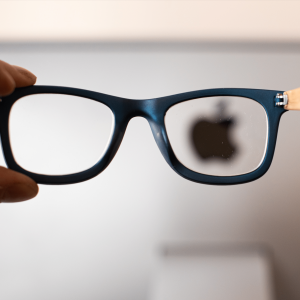In 2010, three decades after founding telecom giant SoftBank Corp., CEO Masayoshi Son took the stage at the company’s June shareholders’ meeting and made what he thought would be “the most important speech in my life.”
The subject? His 30-year vision for the company.
As grand as that sounds, SoftBank’s recent moves indicate that the firm is on course, as it spreads its wings and takes flight in the global telecommunications market.
Son’s vision included expanding the number of group firms to 5,000 from 800, and breaching the top 10 list of the world’s most valuable companies with a market value of at least Y200 trillion.
The bold acquisition of Sprint Nextel Corp., the third-biggest mobile phone company in the United States, best represents Son’s global ambitions.
The deal turned SoftBank, long known as Japan’s No. 3 cellphone company, into a behemoth with about 100 million subscribers worldwide. This means SoftBank is no longer No. 3 in Japan, but in the world.
“The domestic market won’t grow as much as it has, so (SoftBank) is making a pre-emptive move to secure growth opportunities,” said Naoki Yokota, chief analyst at SMBC Friend Research Center.
Ever since it bought Vodafone’s Japan unit in 2006 and became a cellphone carrier, SoftBank has been on the rise, capitalizing on an almighty lift from the iPhone in 2008 to kick off the smartphone boom in Japan while rival carriers NTT Docomo Inc. and KDDI Corp. dallied before jumping on the bandwagon.
SoftBank led in annual subscriber gains for six years in a row and hiked its market share to 22 percent in 2013 from 16 percent in 2006. Its sales and operating profit are constantly on the rise.
Yet competition remains tough in Japan, with both Docomo and KDDI both selling Apple’s iPhones, making it difficult for the carriers to differentiate themselves to consumers.
Son said there is a risk in sticking to the shrinking Japanese market but admitted competing in the U.S. will also be tough.
“We are not sure if our experiences in Japan will work in a different market with different cultures. It’s like a challenge where we are going to have to start from zero,” he said at a news conference for the Spring acquisition in October 2012.
“But we may be courting a bigger risk by not challenging” ourselves and staying in Japan, he said.
SoftBank’s mission in the U.S. is quite clear: replicate what it did with Vodafone, the struggling third-place carrier SoftBank rebuilt.
Since Sprint is far behind top rivals Verizon and AT&T, Son said his firm can re-create the Vodafone scenario in the U.S. as well. Verizon has 32 percent of the U.S. market in terms of subscribers, while AT&T has 30 percent and Sprint just 16 percent.
But SoftBank’s prospects for a Sprint turnaround remain unclear as the trio’s handset lineups differ little and all sell the iPhone.
Last October, Son said it will take another year to get Sprint ready to compete because its communications networks are weak, and SoftBank needs to provide it with new sales and marketing strategies.
SoftBank is also reportedly in talks to acquire T-Mobile, the fourth-biggest U.S. carrier, to further bolster its position. But a Sprint-T-Mobile merger will face scrutiny from the U.S. government over fair competition issues.
Son declined to comment on T-Mobile during a news conference last week.
“The only thing I can say is that the competition among carriers in the U.S. is not that intense” in terms of networks and prices, said Son.
“It is in a state of duopoly under the top two companies (Verizon and AT&T),” he said.
While SoftBank is betting big on the U.S. market, this is actually not the first time it has entered America.
Back in 1995, it acquired the Comdex computer trade show and Ziff-Davis Publishing, the largest publisher of computer-related magazines, with ambitions for global expansion.
But the foray flopped.
When SoftBank buys or invests in foreign companies, management is left largely untouched, as was the case with Comdex and Ziff-Davis. Son admitted that approach failed and said he intends to get more involved with Sprint’s management as chairman.
“I won’t be just sitting in a chair. . . . I plan to be actively involved with the management,” Son said in October 2012.
Last September, SoftBank even built an office in Silicon Valley where executives from both SoftBank and Sprint hold a monthly meeting. The California office is expected be the SoftBank group’s technology hub and have a staff of 1,000.
While Sprint is a major part of SoftBank’s overseas strategy, it has been investing and teaming up with other foreign companies as well, such as Alibaba Group Holding Ltd., which runs China’s largest e-commerce site, Ustream Inc., a major video streaming service, and PayPal, the world’s top online payment service.
Yet recent investments show that SoftBank is apparently making bid to secure an advantage in the global smartphone arena.
For instance, SoftBank spent Y151 billion in October to buy Supercell, a Finland-based game maker that has produced major smartphone hits, and Y123 billion to acquire Brightstar, the world’s largest cellphone distributor.
Experts say SoftBank is not only aiming to become a global mega-carrier that provides basic communications infrastructure, but a controller of content and distribution networks as well.
With smartphones in wide use in developed countries, the handset market has little upside, but the content market will continue to expand, said Yokota of SMBC.
The landscape of the communications industry changes so quickly it is hard to project what it will look like in a few years. But Takenobu Miki, who used to head the president’s office at SoftBank and worked side by side with Son, said Softbank’s global strategy seems to be right on track.
“For a long time, Son has believed that everything will eventually be communicated through wireless technology,” Miki said.
As technology keeps evolving, people are likely to have extremely small but powerful devices that will allow them to communicate wirelessly, said Miki, who now runs Tokyo-based consultancy Japan Flagship Project Co.
“If that’s the case, it is natural to secure wireless communication infrastructure and content. Radio waves are limited. It’s a real good investment to secure the best radio waves,” Miki said.












